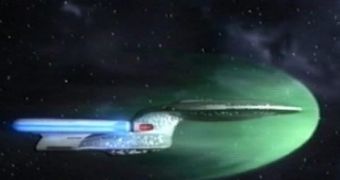With plans from the United States, Russia, India, Japan and China to send astronauts back to the Moon around 2020, and the upcoming US manned mission to Mars, scientists are hard at work to find some way of shielding spaceships from dangerous cosmic radiation (see "The Earth's Magnetic Field Threatens Astronauts on the Moon" article)
Exposure to energetic charged particles could put astronauts on lengthy missions at increased risk of cancer and even cognitive problems. The particles come from the solar wind and also from supernovae and still-unidentified sources outside the solar system.
The Earth's magnetic field protects spacecraft in low-Earth orbits, such as the space shuttle and International Space Station, from such particles. But astronauts journeying to Mars or living on the Moon would benefit from no such protection.
On the International Space Station (ISS), there is a special thick-walled room to which the astronauts have had to retreat during times of increased solar radiation. However, on longer missions, the astronauts cannot live within shielded rooms, since such shielding would add significantly to the mass of the spacecraft, making them much more expensive and difficult to launch. (see "New Space Shield to Open The Way for The Mars Mission" article)
A team of scientists at the Rutherford Appleton Laboratory, in the UK, are set to construct an experimental magnetic shield that would protect explorers in their journeys between planets.
The team, led by Ruth Bamford, hopes to eventually fly a test satellite surrounded by a cloud of plasma in space.
Sounds like "Star Trek"?
It is a concept well known from sci-fi productions, based on the fact that plasma clouds have strong magnetic and electric fields that can in principle deflect charged particles.
The real applications have begun by testing a simple magnetic field generator that consists of loops of wire with electric current running through them.
Within a few months, they plan to use it to trap a cloud of plasma and test its ability to deflect particles inside a vacuum chamber about 2 meters long. By the end of 2007, they hope to test it in a chamber about twice as large, using higher speed particles.
Feasibility studies showed they were able to deflect charged particles with a plasma bubble and a wire mesh measuring a few centimeters across.
Eventually they hope to attract funding for a demonstrator mission that uses wires around a spacecraft to generate a magnetic field that can contain a plasma cloud.
"Hopefully we'll be able to fly a test mission in the next, say, 10 to 15 years," says team member Robert Bingham of Rutherford Appleton Lab.

 14 DAY TRIAL //
14 DAY TRIAL //